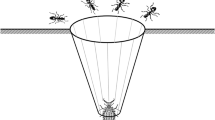Abstract
In this paper, we present our version of the MultiObjective Artificial Bee Colony algorithm (a metaheuristic based on the foraging behavior of honey bees) to optimize the Location Areas Planning Problem. This bi-objective problem models one of the most important tasks in any Public Land Mobile Network: the mobile location management. In previous works of other authors, this management problem was simplified by using the linear aggregation of the objective functions. However, this technique has several drawbacks. That is the reason why we propose the use of multiobjective optimization. Furthermore, with the aim of studying a realistic mobile environment, we apply our algorithm to the mobile network developed by the Stanford University (a mobile network located in the San Francisco Bay, USA). Experimental results show that our proposal outperforms other algorithms published in the literature.
Access this chapter
Tax calculation will be finalised at checkout
Purchases are for personal use only
Preview
Unable to display preview. Download preview PDF.
Similar content being viewed by others
References
Agrawal, D., Zeng, Q.: Introduction to Wireless and Mobile Systems. Cengage Learning (2010)
Almeida-Luz, S.M., Vega-Rodríguez, M.A., Gómez-Pulido, J.A., Sánchez-Pérez, J.M.: Applying Differential Evolution to a realistic location area problem using SUMATRA. In: Proceedings of The Second International Conference on Advanced Engineering Computing and Applications in Sciences, pp. 170–175 (2008)
Almeida-Luz, S.M., Vega-Rodríguez, M.A., Gómez-Pulido, J.A., Sánchez-Pérez, J.M.: Solving a realistic location area problem using SUMATRA networks with the Scatter Search algorithm. In: Proceedings of the Ninth International Conference on Intelligent Systems Design and Applications, pp. 689–694 (2009)
Berrocal-Plaza, V., Vega-Rodríguez, M.A., Sánchez-Pérez, J.M., Gómez-Pulido, J.A.: Applying the Strength Pareto Evolutionary Algorithm to solve the location areas planning problem in realistic networks. In: 14th International Conference on Computer Aided Systems Theory, pp. 176–178 (2013)
Berrocal-Plaza, V., Vega-Rodríguez, M.A., Sánchez-Pérez, J.M., Gómez-Pulido, J.A.: Solving the location areas scheme in realistic networks by using a multi-objective algorithm. In: Esparcia-Alcázar, A.I. (ed.) EvoApplications 2013. LNCS, vol. 7835, pp. 72–81. Springer, Heidelberg (2013)
Coello, C.A.C., Lamont, G.B., Veldhuizen, D.A.V.: Evolutionary Algorithms for Solving Multi-Objective Problems (Genetic and Evolutionary Computation). Springer-Verlag New York, Inc., Secaucus (2006)
Deb, K., Pratap, A., Agarwal, S., Meyarivan, T.: A fast and elitist multiobjective genetic algorithm: NSGA-II. IEEE Transactions on Evolutionary Computation 6(2), 182–197 (2002)
Demestichas, P., Georgantas, N., Tzifa, E., Demesticha, V., Striki, M., Kilanioti, M., Theologou, M.E.: Computationally efficient algorithms for location area planning in future cellular systems. Computer Communications 23(13), 1263–1280 (2000)
Garg, V.: Wireless Communications & Networking, 1st edn. Morgan Kaufmann Publishers Inc., San Francisco (2007)
Gondim, P.R.L.: Genetic algorithms and the location area partitioning problem in cellular networks. In: Procedings of the IEEE 46th Vehicular Technology Conference on Mobile Technology for the Human Race, vol. 3, pp. 1835–1838 (1996)
Jannink, J., Cui, Y.: Stanford university mobile activity traces (sumatra), http://infolab.stanford.edu/sumatra (accessed in 2013)
Karaboga, D., Basturk, B.: Artificial bee colony (ABC) optimization algorithm for solving constrained optimization problems. In: Melin, P., Castillo, O., Aguilar, L.T., Kacprzyk, J., Pedrycz, W. (eds.) IFSA 2007. LNCS (LNAI), vol. 4529, pp. 789–798. Springer, Heidelberg (2007)
Kyamakya, K., Jobmann, K.: Location management in cellular networks: classification of the most important paradigms, realistic simulation framework, and relative performance analysis. IEEE Transactions on Vehicular Technology 54(2), 687–708 (2005)
Rubio-Largo, A., Vega-Rodríguez, M.A., Gómez-Pulido, J.A., Sánchez-Pérez, J.M.: A multiobjective approach based on artificial bee colony for the static routing and wavelength assignment problem. Soft Comput. 17(2), 199–211 (2013)
Subrata, R., Zomaya, A.Y.: Dynamic location management for mobile computing. Telecommunication Systems 22(1-4), 169–187 (2003)
Wong, V.W.S., Leung, V.C.: Location management for next-generation personal communications networks. Netwrk. Mag. of Global Internetwkg. 14(5), 18–24 (2000)
Zhou, A., Qu, B.Y., Li, H., Zhao, S.Z., Suganthan, P.N., Zhang, Q.: Multiobjective evolutionary algorithms: A survey of the state of the art. Swarm and Evolutionary Computation 1(1), 32–49 (2011)
Zitzler, E., Thiele, L., Laumanns, M., Fonseca, C., da Fonseca, V.: Performance assessment of multiobjective optimizers: an analysis and review. IEEE Transactions on Evolutionary Computation 7(2), 117–132 (2003)
Author information
Authors and Affiliations
Editor information
Editors and Affiliations
Rights and permissions
Copyright information
© 2013 Springer-Verlag Berlin Heidelberg
About this paper
Cite this paper
Berrocal-Plaza, V., Vega-Rodríguez, M.A., Sánchez-Pérez, J.M. (2013). A New Version of the Multiobjective Artificial Bee Colony Algorithm for Optimizing the Location Areas Planning in a Realistic Network. In: Dediu, AH., Martín-Vide, C., Truthe, B., Vega-Rodríguez, M.A. (eds) Theory and Practice of Natural Computing. TPNC 2013. Lecture Notes in Computer Science, vol 8273. Springer, Berlin, Heidelberg. https://doi.org/10.1007/978-3-642-45008-2_2
Download citation
DOI: https://doi.org/10.1007/978-3-642-45008-2_2
Publisher Name: Springer, Berlin, Heidelberg
Print ISBN: 978-3-642-45007-5
Online ISBN: 978-3-642-45008-2
eBook Packages: Computer ScienceComputer Science (R0)





